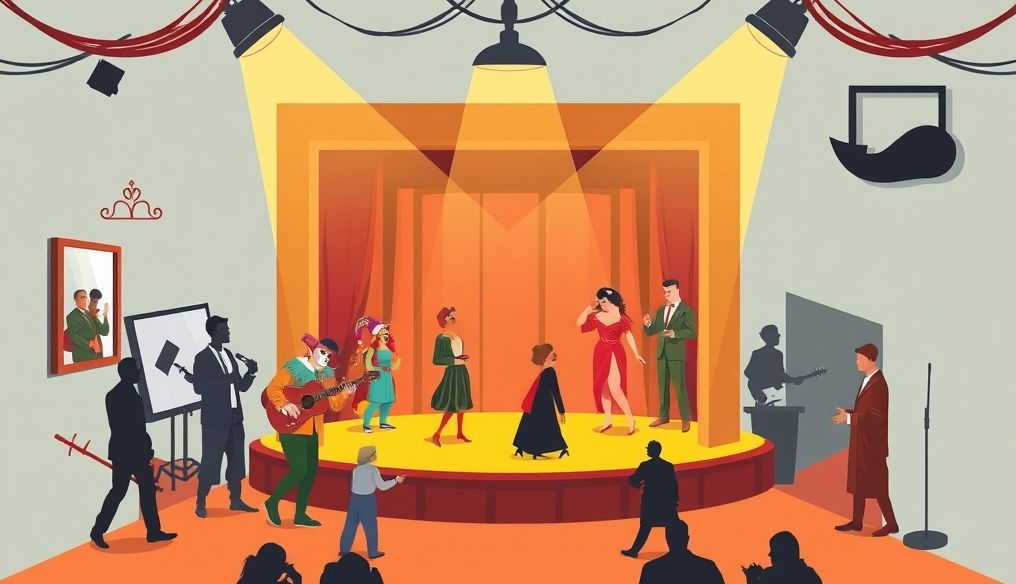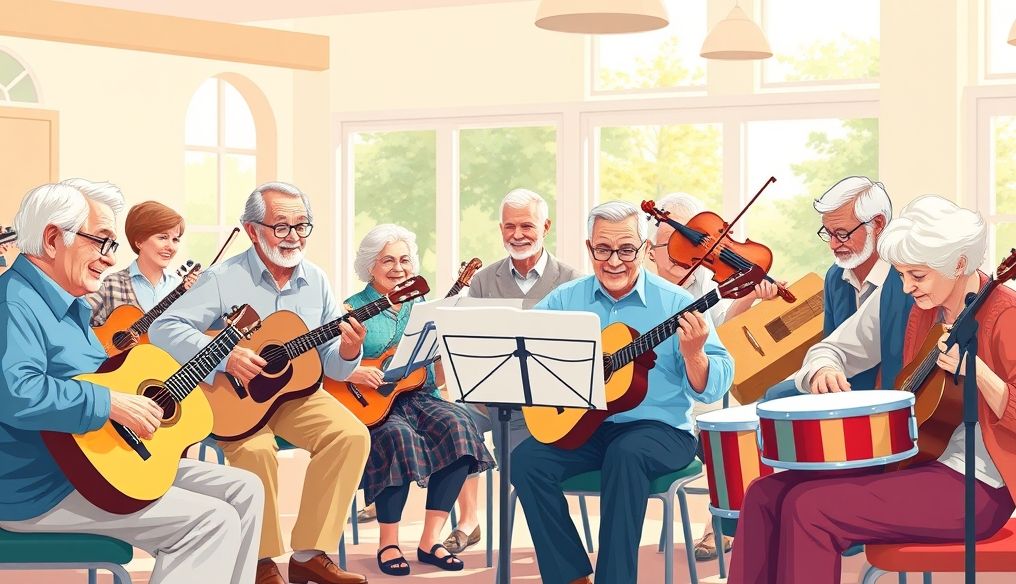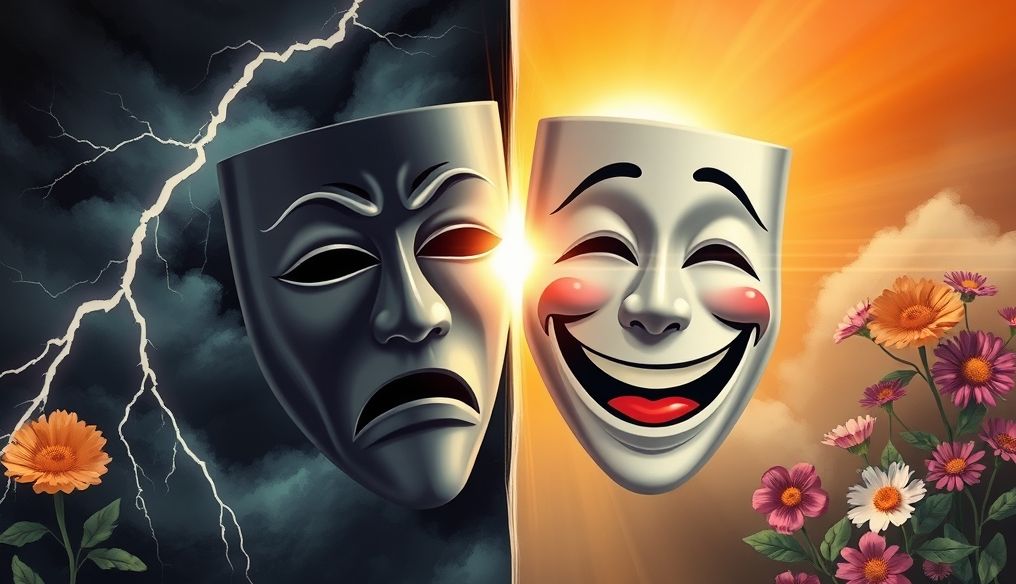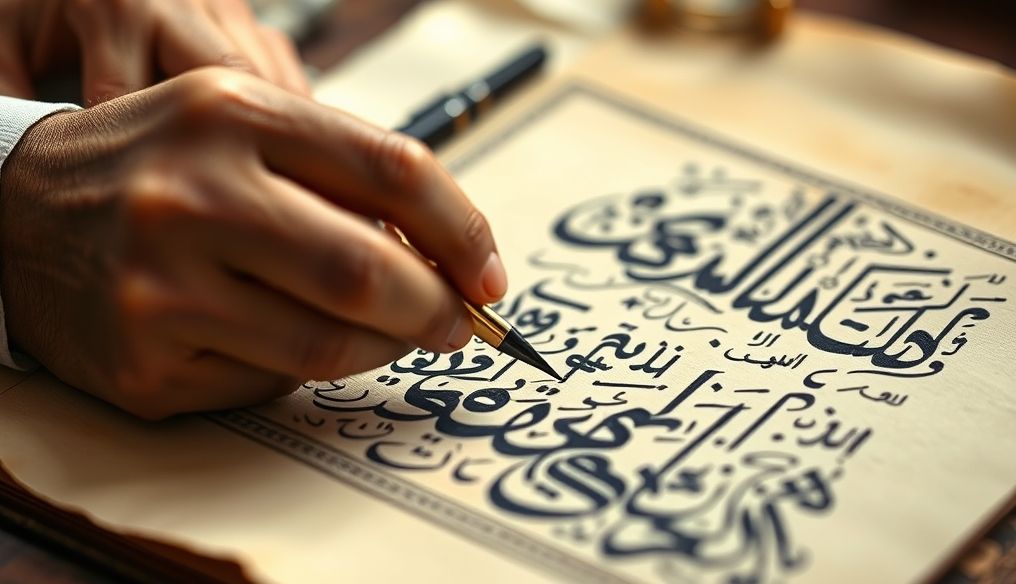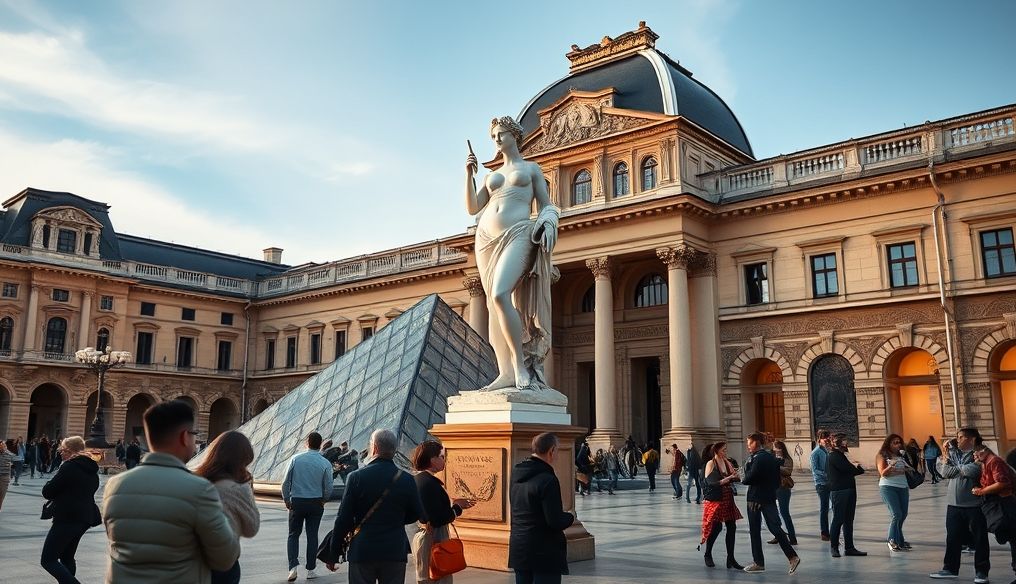What are the Different Types of Plays: Comedy, Tragedy, and More?
Theatre is a performance art that dates back thousands of years and has evolved over the ages to include a diverse range of genres and styles. Each type of play offers a unique experience for the audience, whether it aims to make them laugh, cry, or stimulate them to think.
1. Tragedy: The Art of Human Misery
Tragedy is one of the oldest and most important types of plays. It is characterized by the presentation of tragic events that usually end with the death or destruction of the main character. Tragedy often explores themes such as fate, justice, human suffering, and the struggle between good and evil.
Characteristics of Tragedy:
- The Tragic Hero: The main character in a tragedy is often a noble or high-ranking figure, but they suffer from a fatal flaw or make a serious mistake that leads to their downfall.
- Inevitable Fate: The fate of the tragic hero is often inevitable, and they cannot escape it.
- Catharsis: Tragedy aims to evoke feelings of fear and pity in the audience, leading to their purification from these emotions.
- Lofty Language: Tragedy often uses lofty and poetic language to express deep emotions and complex ideas.
Examples of Famous Tragedies:
- Oedipus Rex by Sophocles
- Hamlet by William Shakespeare
- Romeo and Juliet by William Shakespeare
2. Comedy: The Art of Laughter and Humor
Comedy is a type of play that aims to make the audience laugh. Comedy often deals with light and humorous topics, and uses humor and satire to create funny situations.
Characteristics of Comedy:
- Funny Characters: Comedy often features eccentric, foolish, or involved in funny situations characters.
- Humorous Situations: Comedy relies on humorous situations and ironies to create laughter.
- Happy Ending: Comedy usually ends with a happy ending, where problems are solved and things return to normal.
- Colloquial Language: Comedy often uses colloquial language and everyday conversations to make the characters more realistic and closer to the audience.
Examples of Famous Comedies:
- A Midsummer Night's Dream by William Shakespeare
- The Miser by Molière
- The Importance of Being Earnest by Oscar Wilde
3. Melodrama: The Art of Exaggerated Emotions
Melodrama is a type of play that focuses on exaggerated emotions and intense dramatic situations. Melodrama often deals with themes such as love, hate, revenge, and sacrifice.
Characteristics of Melodrama:
- Stereotypical Characters: Melodrama often features stereotypical characters, such as the good hero, the evil villain, and the innocent victim.
- Exaggerated Emotions: Melodrama relies on exaggerated emotions to create a strong dramatic effect.
- Intense Dramatic Situations: Melodrama often involves intense dramatic situations, such as betrayal, kidnapping, and murder.
- Emotional Ending: Melodrama usually ends with a strong emotional ending, whether happy or sad.
Examples of Famous Melodramas:
- Uncle Tom's Cabin by Harriet Beecher Stowe (often adapted as a play)
- Many soap operas and films are considered melodramatic
4. Farce: The Art of Absurdity and Slapstick
Farce is a type of comedy that relies on absurd and exaggerated situations and slapstick to create laughter. Farce often involves misunderstandings, mistaken identities, chases, and other funny situations.
Characteristics of Farce:
- Absurd Situations: Farce relies on absurd and exaggerated situations to create laughter.
- Caricature Characters: Farce often features exaggerated caricature characters.
- Speed and Rhythm: Farce is characterized by speed and fast rhythm, which increases the intensity of laughter.
- Slapstick: Farce often involves slapstick and funny physical movements.
Examples of Famous Farces:
- The Importance of Being Earnest by Oscar Wilde (some consider this a clever farce)
- Noises Off by Michael Frayn
5. Drama: The Art of Real Life
Drama is a broad type of play that includes a variety of stories and themes. Drama often deals with important social, political, and human issues, and aims to stimulate the audience to think and reflect.
Characteristics of Drama:
- Realism: Drama often seeks to portray real life accurately and honestly.
- Complex Characters: Drama often features complex and multifaceted characters.
- Social and Political Issues: Drama often deals with important social, political, and human issues.
- Stimulation to Think: Drama aims to stimulate the audience to think and reflect on the issues raised.
Examples of Famous Dramas:
- Death of a Salesman by Arthur Miller
- A Streetcar Named Desire by Tennessee Williams
6. Musical Theatre: The Art of Singing and Dancing
Musical theatre is a type of play that combines acting, singing, and dancing to tell a story. Musical plays often deal with romantic, comedic, or dramatic themes, and feature catchy melodies and dazzling dances.
Characteristics of Musical Theatre:
- Combining Arts: Musical theatre combines acting, singing, and dancing to tell a story.
- Catchy Melodies: Musical plays feature catchy and easy-to-remember melodies.
- Dazzling Dances: Musical plays often include dazzling and elaborate dances.
- Large Production: Musical plays often require a large and expensive production.
Examples of Famous Musical Theatre:
- Les Misérables
- Hamilton
- Chicago
7. Experimental Theatre: The Art of Renewal and Innovation
Experimental theatre is a type of play that aims to renew, innovate, and challenge familiar theatrical traditions. Experimental theatre often uses unconventional techniques and unusual methods to express ideas and feelings.
Characteristics of Experimental Theatre:
- Renewal and Innovation: Experimental theatre aims to renew and innovate in theatre.
- Unconventional Techniques: Experimental theatre often uses unconventional techniques, such as using modern technology or integrating different arts.
- Unusual Methods: Experimental theatre often uses unusual methods to express ideas and feelings.
- Challenging Traditions: Experimental theatre challenges familiar theatrical traditions.
Examples of Experimental Theatre:
- Works by Antonin Artaud
- Works by Robert Wilson
8. Theatre of the Absurd: The Art of the Nonsensical
Theatre of the Absurd is a type of play that portrays life as absurd and meaningless. Theatre of the Absurd is often characterized by illogical dialogues, bizarre situations, and unrealistic characters.
Characteristics of Theatre of the Absurd:
- Absurdity: Theatre of the Absurd portrays life as absurd and meaningless.
- Illogical Dialogues: Theatre of the Absurd is often characterized by illogical and disjointed dialogues.
- Bizarre Situations: Absurdist plays often include bizarre and unfamiliar situations.
- Unrealistic Characters: Absurdist plays often feature unrealistic and eccentric characters.
Examples of Theatre of the Absurd:
- Waiting for Godot by Samuel Beckett
- The Chairs by Eugène Ionesco
In conclusion, the world of theatre is rich and diverse, offering a wide range of experiences for the audience. Whether you prefer hilarious comedy, moving tragedy, or realistic drama, you are sure to find a type of play that suits your taste and interests.
